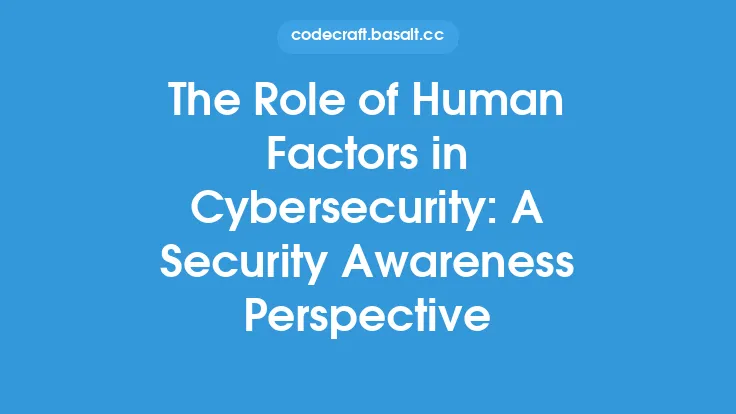In today's digital landscape, organizations face an ever-present threat of cyberattacks, data breaches, and other security incidents that can compromise their sensitive information, disrupt operations, and damage their reputation. As a result, having a robust incident response strategy in place is crucial for minimizing the impact of such incidents and ensuring business continuity. However, an effective incident response strategy requires more than just a well-planned process; it demands a culture of awareness and preparedness that permeates every level of the organization. This culture of incident response awareness is essential for fostering a proactive and responsive approach to cybersecurity, enabling organizations to detect, respond to, and recover from incidents efficiently.
Understanding the Importance of Incident Response Awareness
Incident response awareness refers to the knowledge, attitudes, and behaviors that individuals within an organization exhibit in relation to cybersecurity incidents. It encompasses the ability to recognize potential security threats, understand the procedures for reporting and responding to incidents, and appreciate the importance of collaboration and communication during the incident response process. A culture of incident response awareness is vital because it ensures that all employees, regardless of their role or department, are vigilant and proactive in preventing, detecting, and responding to security incidents. This collective awareness helps to reduce the risk of incidents occurring in the first place and minimizes their impact when they do occur.
Building a Culture of Incident Response Awareness
Creating a culture of incident response awareness within an organization requires a multifaceted approach that involves several key strategies. First, organizations must establish clear policies and procedures for incident response, ensuring that all employees understand their roles and responsibilities in the event of a security incident. This includes defining incident response protocols, identifying key personnel and their responsibilities, and outlining the procedures for reporting and escalating incidents. Second, organizations must provide regular training and awareness programs to educate employees about cybersecurity threats, incident response procedures, and the importance of their role in preventing and responding to incidents. These programs should be tailored to the specific needs and roles of different employee groups, ensuring that everyone has the knowledge and skills necessary to contribute to the organization's incident response efforts.
Implementing Awareness Programs
Implementing effective awareness programs is a critical component of building a culture of incident response awareness. These programs should be designed to engage employees, promote a culture of cybersecurity awareness, and provide them with the knowledge and skills necessary to prevent, detect, and respond to security incidents. Some strategies for implementing awareness programs include conducting regular training sessions, workshops, and exercises; distributing newsletters, alerts, and other communications to keep employees informed about cybersecurity threats and incident response procedures; and recognizing and rewarding employees who demonstrate good cybersecurity practices and contribute to the organization's incident response efforts. Additionally, organizations can leverage various tools and technologies, such as phishing simulations, security awareness platforms, and incident response software, to support their awareness programs and enhance employee engagement.
The Role of Leadership in Promoting Incident Response Awareness
Leadership plays a crucial role in promoting a culture of incident response awareness within an organization. Senior executives and managers must demonstrate a commitment to cybersecurity and incident response, setting the tone for the rest of the organization and encouraging a culture of awareness and preparedness. This involves prioritizing incident response planning and training, allocating necessary resources to support incident response efforts, and leading by example in terms of cybersecurity practices and incident response behaviors. Leaders must also foster an environment of open communication, encouraging employees to report potential security incidents and providing feedback and recognition for their contributions to incident response efforts. By demonstrating their commitment to incident response awareness, leaders can inspire a culture of proactive and responsive cybersecurity practices throughout the organization.
Technical Aspects of Incident Response Awareness
From a technical perspective, creating a culture of incident response awareness involves several key considerations. First, organizations must implement robust security controls and monitoring systems to detect and respond to security incidents. This includes deploying intrusion detection and prevention systems, implementing log monitoring and analysis, and using security information and event management (SIEM) systems to collect, monitor, and analyze security-related data. Second, organizations must ensure that their incident response plans and procedures are aligned with technical capabilities, such as incident response tools and technologies. This includes leveraging automation and orchestration tools to streamline incident response processes, using threat intelligence platforms to stay informed about emerging threats, and implementing incident response software to support incident reporting, tracking, and management. Finally, organizations must stay up-to-date with the latest technical developments and advancements in incident response, continually assessing and improving their technical capabilities to ensure they can effectively detect, respond to, and recover from security incidents.
Measuring and Evaluating Incident Response Awareness
Measuring and evaluating incident response awareness is essential for determining the effectiveness of an organization's awareness programs and identifying areas for improvement. This involves tracking key metrics, such as employee participation in training programs, incident reporting rates, and response times, to assess the level of awareness and preparedness within the organization. Organizations can also conduct regular surveys and assessments to gauge employee knowledge and attitudes towards incident response, identifying gaps in awareness and understanding that need to be addressed. Additionally, organizations can leverage metrics and benchmarks from industry peers and incident response frameworks, such as NIST and ISO, to evaluate their incident response awareness programs and identify opportunities for improvement. By continually measuring and evaluating incident response awareness, organizations can refine their awareness programs, enhance their incident response capabilities, and foster a culture of proactive and responsive cybersecurity practices.
Conclusion
Creating a culture of incident response awareness within an organization is a critical component of effective cybersecurity and incident response. By establishing clear policies and procedures, providing regular training and awareness programs, and promoting a culture of awareness and preparedness, organizations can foster a proactive and responsive approach to cybersecurity, minimizing the risk and impact of security incidents. Leadership plays a crucial role in promoting incident response awareness, and technical considerations, such as security controls and monitoring systems, are essential for supporting incident response efforts. By measuring and evaluating incident response awareness, organizations can continually improve their awareness programs, enhance their incident response capabilities, and ensure they are well-prepared to detect, respond to, and recover from security incidents. Ultimately, a culture of incident response awareness is essential for protecting an organization's sensitive information, ensuring business continuity, and maintaining a strong cybersecurity posture in today's ever-evolving threat landscape.





